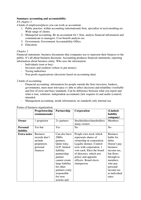Summary
Financial accounting international financial reporting standards global edition summary first year
- Course
- Institution
- Book
Summary financial accounting international financial reporting standards by Harrison. First year financial accounting UCM/SBE
[Show more]




